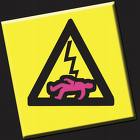What you need to know and strictly follow when repairing household electrical appliances and machines
 1. Electrical personnel working with equipment connected to electrical networks must know the rules for technical operation, safe maintenance and repair of household electrical appliances and machines.
1. Electrical personnel working with equipment connected to electrical networks must know the rules for technical operation, safe maintenance and repair of household electrical appliances and machines.
2. In the event of a malfunction of the devices and electrical wiring, in violation of the rules of technical operation and safety instructions for working with household electrical appliances, there may be a risk of electric shock. A current of 0.06 A is dangerous to human life, and 0.1 A is fatal.
3. To protect personnel from electric shock when working with voltages above 36 V, electrically insulating protective means (dielectric gloves, tools with insulated handles, etc.) must be used. …
4. The voltage supplying electric soldering irons, soldering baths and portable (hand) lamps should not exceed 36 V.
5.Work with electrical appliances and other devices near heating systems, water supply, earth loop, earthed equipment, etc., is allowed only after first securing earthed parts. The fence will exclude the possibility of a person working between the live part and the ground.
6. When working with lead-lead solders, it is necessary to strictly observe the rules of production and personal hygiene. It is strictly forbidden to eat or smoke in a room where soldering with lead-containing solders is carried out.
7. Particular attention should be paid to the lighting of workplaces, since the work is associated with considerable stress and attention to the eyes. Both general and local lighting should be provided in production areas.
8. Before starting work, it is necessary to check the availability of the tool and its operability.
9. Equipment and tools must be placed in the workplace with due regard for convenience and safety.
10. Assembly of the circuit or partial changes to it must be carried out only after disconnecting all supply voltages.
11. When repairing household appliances, it is necessary to use aggregates and parts, materials and equipment suitable for the operating voltage.
12. Before connecting any circuit, you should first study it and be especially familiar with circuits with voltages above 36 V.
13. The presence of voltage in circuits, rectifier blocks and other electrical circuits is checked by means of voltage indicators, voltmeters or special probes. It is strictly forbidden to check the voltage for spark and touch.
14.The assembled circuit, electrical equipment and electrical installations must be connected to power sources only through fuses with rated fuses corresponding to the current and voltage.
15. In case of temporary interruption of work (lunch break, etc.) with electrical equipment, it is necessary to disconnect all devices from the network.
16. After completion of work, it is necessary: disconnect all equipment, electrified tools from the electrical network, remove devices, materials, tools, arrange the workplace.
